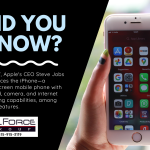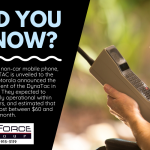911 Emergency: How a Three-Digit Number Became a Lifeline
Introduction
In the modern world, where every second matters, the resonance of three simple digits – 911 – has become a symphony of hope and rescue in times of crisis. These numbers are no ordinary sequence; they hold the power to connect individuals to swift and life-saving emergency services. The evolution of 911 from a seemingly inconspicuous combination to an indispensable lifeline is a remarkable narrative that underscores human innovation, collaboration, and the unwavering commitment to safeguarding lives. Let’s delve into the captivating journey of how the 911 emergency number emerged and transformed into the beacon of assistance that it is today.
The Genesis of a Lifesaving Connection
During emergencies, this straightforward number combination, 911, has become a symbol of optimism. The unassuming three-digit combination has become synonymous with summoning urgent help when life takes a dire turn. The journey of how this seemingly ordinary number evolved into a lifeline connecting individuals with emergency services is a testament to human innovation and the drive to save lives.
A Defining Moment in 1968
The year 1968 marked a turning point in the history of emergency response systems in the United States. Before this transformative moment, navigating through emergencies was a complex ordeal. People had to dial a variety of local numbers to reach the appropriate service, causing delays that could be fatal in critical situations. Recognizing the need for a streamlined approach, a decision was made that would revolutionize the way emergency services were accessed.
Enter 911. In 1968, this three-digit number was chosen as the nationwide emergency number, and a monumental agreement was reached among the nation’s telephone companies. This agreement ensured that the sequence 911 would be unavailable as an exchange number, eliminating any potential confusion and establishing a dedicated lifeline for emergencies.
Simplification and Swift Response
The adoption of 911 as the emergency number introduced a new era of simplicity and efficiency. No longer did individuals need to remember an assortment of numbers for different emergencies. The ease of recalling 911, even in times of distress, paved the way for quicker and more effective response times.
This simplicity extended to emergency services as well. Trained dispatchers became the crucial link between callers and the help they desperately needed. The straightforwardness of 911 allowed dispatchers to focus on categorizing and prioritizing calls, ensuring that the right assistance was dispatched promptly. Through the act of dialing three digits, individuals could provide vital information and receive the appropriate help without any unnecessary delays.
Technological Evolution of 911
As technology forged ahead, so did the capabilities of the 911 emergency system. The original concept of dialing 911 and being routed to a local dispatcher expanded to include more sophisticated features. Enhanced 911 (E911) was introduced, enabling dispatchers to automatically access the caller’s location information. This advancement drastically reduced response times, as precious moments were no longer wasted on acquiring the caller’s whereabouts.
However, the rise of mobile phones introduced a fresh set of challenges and opportunities. To address this, collaborations between telecommunication companies and emergency services led to the development of technology that pinpointed the precise location of mobile callers. This innovation empowered individuals to connect with 911 from virtually anywhere, ensuring that help could reach them regardless of their location.
Fostering Awareness and Accessibility
While 911 has solidified its place as a lifeline, its effectiveness hinges on public awareness and accessibility. Educating individuals about the appropriate use of 911 can significantly impact its efficacy in emergencies. Community outreach programs, school initiatives, and public campaigns have all contributed to spreading knowledge about the correct utilization of 911 services, as well as the importance of providing accurate information during calls.
Accessibility has also been a critical focus. Text-to-911 services have been implemented to accommodate individuals with hearing or speech impairments, allowing them to communicate with emergency services seamlessly. Additionally, multilingual support has been integrated to bridge language barriers, ensuring that 911 remains universally accessible to diverse populations.
Conclusion
In today’s fast-paced world, the significance of 911 cannot be overstated. What originated as a mere sequence of digits has evolved into a universal symbol of hope and assistance. The historical backdrop of 911’s journey from a random number to a lifesaving tool serves as a reminder of human ingenuity, cooperation, and the unwavering commitment to public safety.
As 911 continues to be a steadfast ally during emergencies, comprehending its evolution becomes pivotal. Acknowledging the transformative impact of this number on emergency response systems fosters a deep sense of respect for the service and underscores the necessity of staying informed about its usage.
Sources:
- Federal Communications Commission. (n.d.). Wireless 911 Services. https://www.fcc.gov/consumers/guides/wireless-911-service
- National Museum of American History. This is 9-1-1. What is your emergency? https://americanhistory.si.edu/blog/9-1-1-history
- Federal Communications Commission. (n.d.). Enhanced 911 – E911. https://www.fcc.gov/general/enhanced-9-1-1-wireless-services
- Federal Communications Commission. (n.d.). Text-to-911: Quick Facts. https://www.fcc.gov/consumers/guides/what-you-need-know-about-text-911
- National Emergency Number Association. (2021). Educational Resources. https://www.nena.org/page/Education
- Wikipedia. 2023. 9-1-1.
https://en.wikipedia.org/wiki/9-1-1





